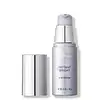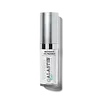What's inside
What's inside
 Key Ingredients
Key Ingredients

 Benefits
Benefits

 Concerns
Concerns

 Ingredients Side-by-side
Ingredients Side-by-side

Water
Skin ConditioningDimethicone
EmollientGlycerin
HumectantButylene Glycol
HumectantHdi/Trimethylol Hexyllactone Crosspolymer
Polysilicone-11
Ethylhexyl Olivate
Skin ConditioningBoron Nitride
AbsorbentSodium Acrylate/Sodium Acryloyldimethyl Taurate Copolymer
Emulsion StabilisingPhenylethyl Resorcinol
AntioxidantPolymethylsilsesquioxane
Phenoxyethanol
PreservativeAlbizia Julibrissin Bark Extract
MaskingDecyl Glucoside
CleansingCaffeine
Skin ConditioningIsohexadecane
EmollientVitis Vinifera Flower Cell Extract
MaskingHydroxyacetophenone
AntioxidantTrehalose
HumectantUrea
BufferingPentylene Glycol
Skin ConditioningPolysorbate 80
EmulsifyingSucrose Palmitate
EmollientSea Water
HumectantCaprylyl Glycol
EmollientSclareolide
MaskingDisodium EDTA
Tromethamine
BufferingDiethylhexyl Syringylidenemalonate
Skin ProtectingEthylhexylglycerin
Skin ConditioningSqualane
EmollientTocopheryl Acetate
AntioxidantPolysorbate 60
EmulsifyingSilica
AbrasiveSerine
MaskingLecithin
EmollientSucrose
HumectantPlankton Extract
Skin ConditioningPropanediol
SolventSodium Hyaluronate
HumectantAlteromonas Ferment Extract
Skin ConditioningSodium Hyaluronate Crosspolymer
HumectantSodium Chloride
MaskingPullulan
Disodium Phosphate
BufferingAlgin
MaskingGlyceryl Polyacrylate
Hydrolyzed Hyaluronic Acid
HumectantCaprylic/Capric Triglyceride
MaskingPorphyridium Cruentum Extract
Skin ConditioningPotassium Sorbate
PreservativePotassium Phosphate
BufferingSigesbeckia Orientalis Extract
Skin ConditioningCitric Acid
BufferingWater, Dimethicone, Glycerin, Butylene Glycol, Hdi/Trimethylol Hexyllactone Crosspolymer, Polysilicone-11, Ethylhexyl Olivate, Boron Nitride, Sodium Acrylate/Sodium Acryloyldimethyl Taurate Copolymer, Phenylethyl Resorcinol, Polymethylsilsesquioxane, Phenoxyethanol, Albizia Julibrissin Bark Extract, Decyl Glucoside, Caffeine, Isohexadecane, Vitis Vinifera Flower Cell Extract, Hydroxyacetophenone, Trehalose, Urea, Pentylene Glycol, Polysorbate 80, Sucrose Palmitate, Sea Water, Caprylyl Glycol, Sclareolide, Disodium EDTA, Tromethamine, Diethylhexyl Syringylidenemalonate, Ethylhexylglycerin, Squalane, Tocopheryl Acetate, Polysorbate 60, Silica, Serine, Lecithin, Sucrose, Plankton Extract, Propanediol, Sodium Hyaluronate, Alteromonas Ferment Extract, Sodium Hyaluronate Crosspolymer, Sodium Chloride, Pullulan, Disodium Phosphate, Algin, Glyceryl Polyacrylate, Hydrolyzed Hyaluronic Acid, Caprylic/Capric Triglyceride, Porphyridium Cruentum Extract, Potassium Sorbate, Potassium Phosphate, Sigesbeckia Orientalis Extract, Citric Acid
Water
Skin ConditioningGlycerin
HumectantCaprylic/Capric Triglyceride
MaskingCetearyl Alcohol
EmollientDimethicone
EmollientPentylene Glycol
Skin ConditioningJojoba Esters
EmollientCetearyl Glucoside
EmulsifyingGlyceryl Stearate
EmollientNiacinamide
SmoothingPEG-100 Stearate
Palmitoyl Hexapeptide-12
Skin ConditioningPalmitoyl Tripeptide-1
Skin ConditioningTetrapeptide-30
Skin ConditioningAlbizia Julibrissin Bark Extract
MaskingGallyl Glucoside
AntioxidantSodium Hyaluronate
HumectantEpigallocatechin Gallatyl Glucoside
AntioxidantDarutoside
Skin ConditioningDunaliella Salina Extract
Skin ConditioningOrnithine
Skin ConditioningPhospholipids
Skin ConditioningButyrospermum Parkii Butter Extract
Skin ConditioningGlycolipids
Skin ConditioningBetaine
HumectantTremella Fuciformis Sporocarp Extract
AntioxidantBeta-Glucan
Skin ConditioningSilica
AbrasiveHdi/Trimethylol Hexyllactone Crosspolymer
Propanediol
SolventSqualane
EmollientPolysorbate 20
EmulsifyingPolyacrylate-13
Xanthan Gum
Emulsifying1,2-Hexanediol
Skin ConditioningBenzyl Alcohol
PerfumingDehydroacetic Acid
PreservativeHelianthus Annuus Seed Oil
EmollientLevulinic Acid
PerfumingP-Anisic Acid
MaskingPotassium Sorbate
PreservativeSodium Benzoate
MaskingSodium Hydroxide
BufferingSorbitan Isostearate
EmulsifyingTocopherol
AntioxidantDisodium EDTA
Caprylyl Glycol
EmollientPolyisobutene
Caprylhydroxamic Acid
Phenoxyethanol
PreservativePropyl Gallate
AntioxidantEthylhexylglycerin
Skin ConditioningWater, Glycerin, Caprylic/Capric Triglyceride, Cetearyl Alcohol, Dimethicone, Pentylene Glycol, Jojoba Esters, Cetearyl Glucoside, Glyceryl Stearate, Niacinamide, PEG-100 Stearate, Palmitoyl Hexapeptide-12, Palmitoyl Tripeptide-1, Tetrapeptide-30, Albizia Julibrissin Bark Extract, Gallyl Glucoside, Sodium Hyaluronate, Epigallocatechin Gallatyl Glucoside, Darutoside, Dunaliella Salina Extract, Ornithine, Phospholipids, Butyrospermum Parkii Butter Extract, Glycolipids, Betaine, Tremella Fuciformis Sporocarp Extract, Beta-Glucan, Silica, Hdi/Trimethylol Hexyllactone Crosspolymer, Propanediol, Squalane, Polysorbate 20, Polyacrylate-13, Xanthan Gum, 1,2-Hexanediol, Benzyl Alcohol, Dehydroacetic Acid, Helianthus Annuus Seed Oil, Levulinic Acid, P-Anisic Acid, Potassium Sorbate, Sodium Benzoate, Sodium Hydroxide, Sorbitan Isostearate, Tocopherol, Disodium EDTA, Caprylyl Glycol, Polyisobutene, Caprylhydroxamic Acid, Phenoxyethanol, Propyl Gallate, Ethylhexylglycerin
 Reviews
Reviews

Ingredients Explained
These ingredients are found in both products.
Ingredients higher up in an ingredient list are typically present in a larger amount.
We don't have a description for Albizia Julibrissin Bark Extract yet.
This ingredient is an emollient, solvent, and texture enhancer. It is considered a skin-softener by helping the skin prevent moisture loss.
It helps thicken a product's formula and makes it easier to spread by dissolving clumping compounds.
Caprylic Triglyceride is made by combining glycerin with coconut oil, forming a clear liquid.
While there is an assumption Caprylic Triglyceride can clog pores due to it being derived from coconut oil, there is no research supporting this.
Learn more about Caprylic/Capric TriglycerideCaprylyl Glycol is a humectant and emollient, meaning it attracts and preserves moisture.
It is a common ingredient in many products, especially those designed to hydrate skin. The primary benefits are retaining moisture, skin softening, and promoting a healthy skin barrier.
Though Caprylyl Glycol is an alcohol derived from fatty acids, it is not the kind that can dry out skin.
This ingredient is also used as a preservative to extend the life of products. It has slight antimicrobial properties.
Learn more about Caprylyl GlycolDimethicone is a type of synthetic silicone created from natural materials such as quartz.
What it does:
Dimethicone comes in different viscosities:
Depending on the viscosity, dimethicone has different properties.
Ingredients lists don't always show which type is used, so we recommend reaching out to the brand if you have questions about the viscosity.
This ingredient is unlikely to cause irritation because it does not get absorbed into skin. However, people with silicone allergies should be careful about using this ingredient.
Note: Dimethicone may contribute to pilling. This is because it is not oil or water soluble, so pilling may occur when layered with products. When mixed with heavy oils in a formula, the outcome is also quite greasy.
Learn more about DimethiconeDisodium EDTA plays a role in making products more stable by aiding other preservatives.
It is a chelating agent, meaning it neutralizes metal ions that may be found in a product.
Disodium EDTA is a salt of edetic acid and is found to be safe in cosmetic ingredients.
Learn more about Disodium EDTAEthylhexylglycerin (we can't pronounce this either) is commonly used as a preservative and skin softener. It is derived from glyceryl.
You might see Ethylhexylglycerin often paired with other preservatives such as phenoxyethanol. Ethylhexylglycerin has been found to increase the effectiveness of these other preservatives.
Glycerin is already naturally found in your skin. It helps moisturize and protect your skin.
A study from 2016 found glycerin to be more effective as a humectant than AHAs and hyaluronic acid.
As a humectant, it helps the skin stay hydrated by pulling moisture to your skin. The low molecular weight of glycerin allows it to pull moisture into the deeper layers of your skin.
Hydrated skin improves your skin barrier; Your skin barrier helps protect against irritants and bacteria.
Glycerin has also been found to have antimicrobial and antiviral properties. Due to these properties, glycerin is often used in wound and burn treatments.
In cosmetics, glycerin is usually derived from plants such as soybean or palm. However, it can also be sourced from animals, such as tallow or animal fat.
This ingredient is organic, colorless, odorless, and non-toxic.
Glycerin is the name for this ingredient in American English. British English uses Glycerol/Glycerine.
Learn more about GlycerinThis ingredient is a powder used to improve texture, slip, and give products a silky texture.
Pentylene glycol is typically used within a product to thicken it. It also adds a smooth, soft, and moisturizing feel to the product. It is naturally found in plants such as sugar beets.
The hydrophilic trait of Pentylene Glycol makes it a humectant. As a humectant, Pentylene Glycol helps draw moisture from the air to your skin. This can help keep your skin hydrated.
This property also makes Pentylene Glycol a great texture enhancer. It can also help thicken or stabilize a product.
Pentylene Glycol also acts as a mild preservative and helps to keep a product microbe-free.
Some people may experience mild eye and skin irritation from Pentylene Glycol. We always recommend speaking with a professional about using this ingredient in your routine.
Pentylene Glycol has a low molecular weight and is part of the 1,2-glycol family.
Learn more about Pentylene GlycolPhenoxyethanol is a preservative that has germicide, antimicrobial, and aromatic properties. Studies show that phenoxyethanol can prevent microbial growth. By itself, it has a scent that is similar to that of a rose.
It's often used in formulations along with Caprylyl Glycol to preserve the shelf life of products.
Potassium Sorbate is a preservative used to prevent yeast and mold in products. It is commonly found in both cosmetic and food products.
This ingredient comes from potassium salt derived from sorbic acid. Sorbic acid is a natural antibiotic and effective against fungus.
Both potassium sorbate and sorbic acid can be found in baked goods, cheeses, dried meats, dried fruit, ice cream, pickles, wine, yogurt, and more.
You'll often find this ingredient used with other preservatives.
Learn more about Potassium SorbatePropanediol is an all-star ingredient. It softens, hydrates, and smooths the skin.
It’s often used to:
Propanediol is not likely to cause sensitivity and considered safe to use. It is derived from corn or petroleum with a clear color and no scent.
Learn more about PropanediolSilica, also known as silicon dioxide, is a naturally occurring mineral. It is used as a fine, spherical, and porous powder in cosmetics.
Though it has exfoliant properties, the function of silica varies depending on the product.
The unique structure of silica enhances the spreadability and adds smoothness, making it a great texture enhancer.
It is also used as an active carrier, emulsifier, and mattifier due to its ability to absorb excess oil.
In some products, tiny microneedles called spicules are made from silica or hydrolyzed sponge. When you rub them in, they lightly polish away dead skin layers and enhance the penetration of active ingredients.
Learn more about SilicaSodium Hyaluronate is hyaluronic acid's salt form. It is commonly derived from the sodium salt of hyaluronic acid.
Like hyaluronic acid, it is great at holding water and acts as a humectant. This makes it a great skin hydrating ingredient.
Sodium Hyaluronate is naturally occurring in our bodies and is mostly found in eye fluid and joints.
These are some other common types of Hyaluronic Acid:
Learn more about Sodium HyaluronateSqualane is an emollient that helps the skin hold onto moisture. It's an oily liquid that occurs naturally in certain types of fish and plant oils.
Because squalane boosts hydration in the skin, it also comes with plenty of benefits: it is an antioxidant and can help fight free radicals and skin damage. Squalane is also found to have a detoxifying effect when applied.
Squalane comes from squalene, which occurs naturally within the sebum of our skin. It is one of the oils our skin produces to keep itself hydrated. Squalane is the hydrogenated version of squalene and has a longer shelf life.
Research shows that squalane is non-irritating (even at 100% concentration).
In general, it's a fantastic ingredient. It does a great job at hydrating the skin, and it's suitable for those with sensitive skin.
The source of squalane may impact malassezia / fungal acne. This is because olive oil derived squalane can contain impurities such as fatty acids and plant waxes. Sugarcane derived squalane is recommended for anyone with malassezia concerns.
Is squalane vegan?
This depends on the source. Squalane can be derived from both plants and animals. Most squalane used in skincare comes from plants.
Please note: the source of squalane is only known if disclosed by the brand. We recommend reaching out to the brand if you have any questions about their squalane.
Read more about squalene with an "e".
Is squalane an oil?
Squalane is often called an oil, but it’s technically not; it’s a hydrocarbon, meaning it’s only made of carbon and hydrogen, unlike true oils which are triglycerides made of fatty acids and glycerol.
The term “oil-free” isn’t regulated, so companies can define it however they want. Some exclude all oils, while others just avoid mineral oil or comedogenic oils.
While some people avoid oils thinking they cause breakouts, the right kind of oil (or oil-like ingredient like squalane) can actually help balance and hydrate your skin. It’s worth testing out simple oils or squalane to see what works best for your skin.
Learn more about SqualaneWater. It's the most common cosmetic ingredient of all. You'll usually see it at the top of ingredient lists, meaning that it makes up the largest part of the product.
So why is it so popular? Water most often acts as a solvent - this means that it helps dissolve other ingredients into the formulation.
You'll also recognize water as that liquid we all need to stay alive. If you see this, drink a glass of water. Stay hydrated!
Learn more about Water